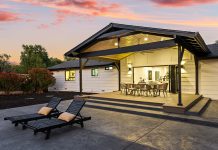Some folks believe they should talk to their plants. How does one do that?
“Good morning, geranium. Do you like that worm nibbling at your buds?”
“Hello, hydrangea. It’s going to be a really warm afternoon. Here’s some extra water.”
“Hey, apple tree! Didn’t I thin your fruit in the spring but you still have too many little apples!”
None of them answer.
Perhaps it would be more fruitful if we gardeners were told to listen and look instead of talking? Just because plants don’t have vocal chords doesn’t mean they don’t communicate their needs. For instance, we all know what a stressed tree looks like as opposed to a happy, well cared for tree. It doesn’t need to talk but we surely can observe.
A wonderful 10-year-old Japanese maple tree planted in a wine barrel was overlooked for about a week during a heat spell recently. When someone on the farm actually looked at it, it was near death. We had not paid attention and the tree suffered serious damage. Today it is slowly, slowly recovering as we make sure it gets daily, deep watering. Where we removed crisp, dry brown leaves there are tiny signs of possible life. We will wait and see.
Hydrangeas are the first plant on a warm day to wilt, but are also quick to recover when watering arrives. But, what, actually is happening when a plant wilts? Normally, during their growing season, cells within plants are filled with water and keeps moving by osmosis. Adequate water keeps the cells turgid, thus rigid so that the plant supports itself. When deprived of water, cells become floppy or flaccid and leaves wilt and soften.
In the case of cut flowers, three conditions are imposed on the cutting. It now has no plant to provide nutrients, bacteria may build up on the cut surface and an air bubble may block the flower stem from obtaining further water.
To combat these conditions and to provide a longer vase life to the cut flower, florists recommend re-cutting the stems underwater. This counteracts the air bubble.
For bacteria prevention, mix a solution of one-quarter teaspoon of bleach in one quart of water. Stir well. In a few days, change the water using a new solution of the bleach mix.
Observing plants will also provide clues as to whether they are getting the proper amount of shade and sun. Most all plants enjoy morning sun but afternoon shade, just like us. There are only a few choices of plants that like full shade but they are beauties — such as rhododendrons, azaleas, camellias, hydrangeas, lupine and astilbe. Yet, even these seem to tolerate, even enjoy some early morning sun.
If you have a plant that is in the wrong amount of light, consider moving it to a more compatible place in the garden.
Roses are some of the greatest conveyers of how they are feeling. If they are in too much shade, they stretch out their branches to find the light, are spindly, with sad little blossoms. They creep through fence slats to find the sun. The climbing varieties will attach themselves to tall trees, seeking warmth and light, relying on support from tree limbs often all the way to the tops of the trees.
This makes for spectacular flower shows but is also a lesson for the gardener — find out what the rose likes before you plant it.
Another, more serious situation needing gardeners’ attention is which plants can threaten the health of humans and animals if ingested or touched?
Hopefully, we are all aware of the toxicity of foxglove and oleander. I know of two farmers who lost beloved animals to both of these plants. One lost their cow and calf, the other a small herd of pygmy goats. These sorts of tragedies are so sad when they can easily be avoided. One set of toxic plants was part of some prunings, the other hidden in a purchased bouquet of flowers.
Recently I planted some coleus in the shade behind a fence but near my sheep. Then I checked to see if coleus was toxic. It was. So I went out to listen to the coleus. They reminded me that houseplants are quite often toxic and should never be near animal habitat.
“Beautiful leaves, awful and deadly stomach ache.” it seemed to say.
I replanted them to a safe location before the sheep got up and out for the day.
If ewe lamb Posey could talk, she’d have said, “Better safe than sorry, Renee.”
Renee Kiff weeds and writes at her family farm in Alexander Valley.









